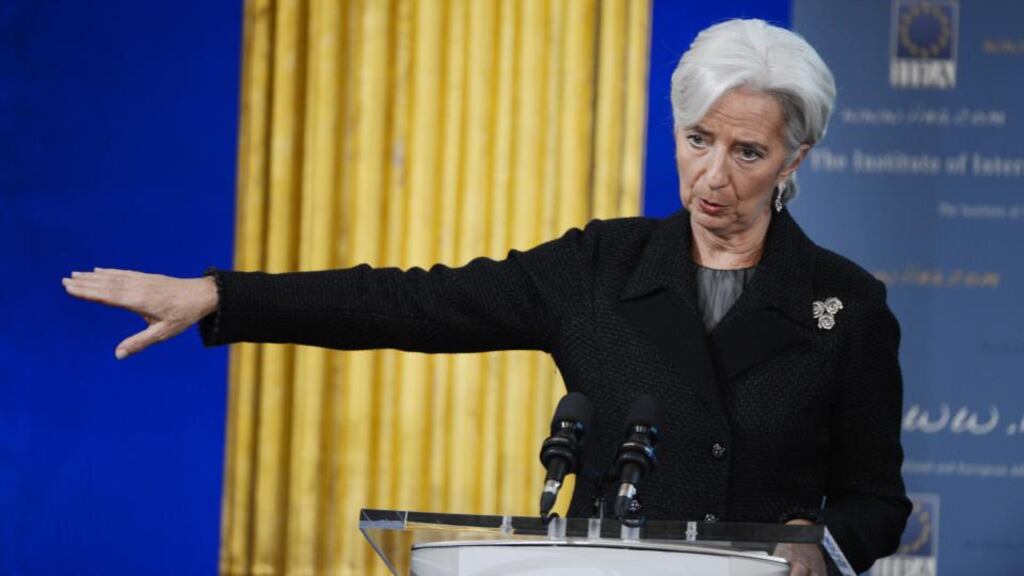The recent IMF review of Ireland’s progress under its bailout programme highlighted the need for “a dramatic shift from the slow progress on resolving non-performing loans to date”.
The fund estimates that the number of mortgage accounts in arrears over 90 days “is now large, at 123,000 including buy-to-let mortgages”. Furthermore, the IMF emphasised the need to strengthen market confidence in banks and to restore the creditworthiness of viable small and medium enterprises.
These were all problems that faced Iceland when, in October 2008, the three largest banks – Kaupthing, Landsbanki and Glitnir – collapsed. The combined size of the sector amounted to eight times the annual GDP of the island.
When losses dried up their equity and subsequently access to foreign credit, the Icelandic government had no choice but to wind up their operation. Yet the banking sector soon returned to profitability, businesses were helped to restructure and become viable again and there was a write-down of distressed mortgages.
Does Iceland’s experience hold any lessons for Ireland?
The equity of most firms in Iceland was wiped out in the aftermath of the collapse of the banks. Devaluation of the króna doubled the nominal value of loans in foreign currency. Income flows temporarily slowed to just a drip. Most firms fell behind on paying their bills. Technically bankrupt would be the verdict if their accounts had been added up at that time, but nobody dared to do that.
As a consequence Icelandic firms lost the trust of their foreign and domestic trading partners. Firms that had goods shipped on three- or six-months credit were asked to pay upfront. Letters of credit from the new Icelandic banks were not accepted. This was understandable as cautious suppliers assumed that Icelandic companies ran a high risk of entering bankruptcy negotiations before payment was made.
Hence, the future of the Icelandic business sector and the growth prospects of the Icelandic economy hinged on the “mercy” of their creditors, domestic and foreign.
The creditors had three options: I) to declare the firm bankrupt and hand it over to the bankruptcy court; II) ask the owner to hand over the shares of the firm and then try to find a buyer for it as a going concern; or III), to fix the balance sheet of the firm by writing down its debt in co-operation with the firm’s owners. Expected recovery, net of legal and administrative expenses, is highest from situation III and lowest from I.
In late 2009, after heated debate, the government, the financial sector, and the business federation agreed on a comprehensive debt-relief programme for firms and families. The main components were: firstly, for the household sector debt in excess of 110 per cent of the fair value of each property was written off. Specific relief measures (administered by a bank or a new debtors’ ombudsman) were put in place for those that could not service a reduced loan.
Secondly, low-income, asset-poor households with high-interest mortgage payments got a temporary subsidy from the government.
Thirdly, small- to medium-sized firms could apply for debt relief if they could credibly document positive cash-flow from future activities. The firm had to be willing to re-engineer its operation so as to make best use of its assets.
Given those conditions, the firm could expect its debt to be written down to equal the discounted value of future earnings or, alternatively, written down to the amount that the bank or other financial firm could expect, in the best of circumstances, to gain from taking the assets over and realising their monetary value. Hence the debt relief programmes did not create new equity, neither on the balance sheets of firms nor households.
This has proven to be a win-win situation for the financial sector, the business sector, families and the Icelandic economy in general. One reason is that a firm that continues operations after having had its debt written down creates benefits for other economic agents. Its workers continue receiving salaries and paying taxes and are spared a spell of unemployment, while the government is spared paying unemployment benefits.
Furthermore, by making a concerted effort to clean out the bad firms and correct the balance sheet of viable firms, a signal was sent to all suppliers to Icelandic firms that bankruptcy risk had been minimised. Thus, debt write downs helped to rebuild trust that had been lost as a consequence of the collapse of the Icelandic banks.
Government initiative was needed to solve a co-ordination problem that private entities could not solve themselves in cases where a firm owes money to many creditors. The co-ordination problem exists as banks A and B may have opposite interests in individual cases but parallel interests when considering their combined loan-book. In Iceland, the legislature solved the problem by forcing the banks to make a concerted effort and by assigning the role of co-ordinator to one creditor (bank) for each firm.
The Icelandic experience confirms that the IMF is correct to be stressing the importance of speedily resolving Irish banks’ non-performing loans. Small- and medium-sized firms will not prosper with negative equity. There is only pain and no gain in postponing necessary write downs of household debt.
The Icelandic example can serve both as an inspiration and a model for how to implement a comprehensive and fair process of debt write downs that promotes growth of economic activity without hurting the balance sheet of the banking sector.
Thorolfur Matthiasson is professor of economics at the University of Iceland and was a member of the government-appointed commission that oversaw the Icelandic debt-resolution process. Peadar Kirby is professor emeritus of international politics and public policy at the University of Limerick and an adjunct professor at the University of Iceland.










